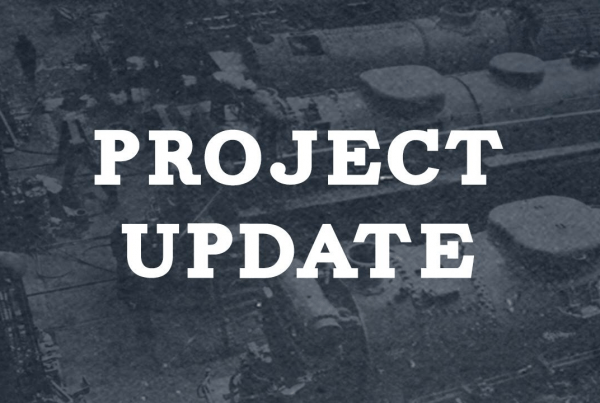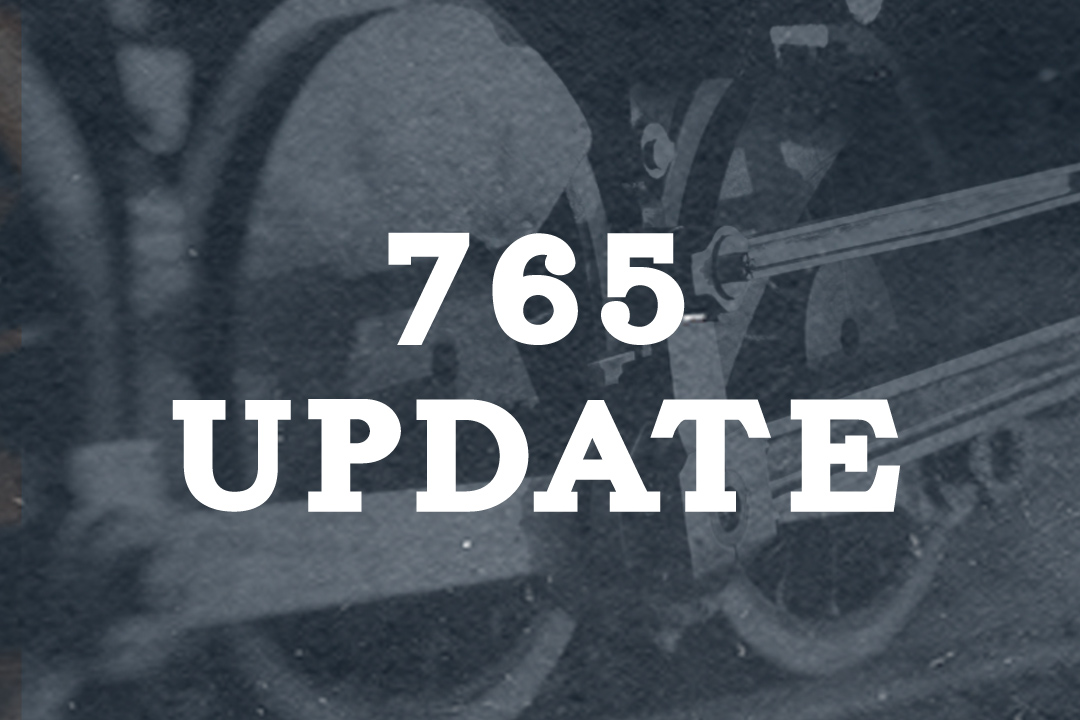Submitted by Tom Nitza.
Last Friday we prepared for the Santa trips and also did some work on the 1231. Another headlight assembly was disassembled, sand blasted and repainted. Before it was reinstalled the wiring was replaced. That leaves one more to go. The final step will be to install new gaskets around each assembly and hopefully keep the water out. In case some does get in there is a drain hole drilled at the bottom of the headlight housing. Previously water got in and sat in the bottom of the headlight and rusted the mounting hardware, some of which had to be replaced on two of the lights.
Saturday and Sunday the Santa trains ran and the only mechanical issue was the lever in the 1231 to operate the bell was stiff to operate. A spray of oil solved the problem. We wouldn’t want an engineer to file a worker’s comp claim. The passengers seemed to enjoy the experience and we all enjoyed the pleasant weather, which won’t be repeated for next weekend.
During the train air test on Saturday I was asked where to find a step by step explanation of the process. The Operating Rules book contains that information for both the train and locomotive. If there are any questions let me know.
During the air test Sunday the tool car’s brakes did not respond but the brakes on the two cabooses did set up. The most likely cause is that the car did not have time to fully charge the reservoirs. The solution is to release the brakes and allow more charging time, probably another five minutes. Once that’s completed try the air test again and 99% of the time this will solve the problem. (Note, you have to release the brakes to charge the reservoirs.)
Finally, it was mentioned that the #1 compressor on 1231 might not be as strong as it should be. I would say that’s probably a correct statement. Over the years, including when the government ran it, most operators would start and run only the #1 engine since that typically provided ample power for switching a few cars. The problem is that the #1 engine has many more hours on it that the #2 engine. As a result it has slightly lower oil pressure, is a little harder to start, and most likely the compressor is worn as well.
So, what to do about this. Well, both the Caterpillar engine and the compressor are long out of production and neither manufacturer offers parts support. In fact years ago I inquired about parts for the compressor and when the guy stopped laughing he said ” if you find some let me know.”
For the moment the #1 engine runs and the compressor pumps air and both are serviceable and neither is making strange noises. The best course of action is to run the #2 engine and only run the #1 engine when you need the power of both combined. Yes, this will put hours on the #2 engine and it will eventually wear out, but we don’t use the locomotive that much and it should give years of service.
If you look way down the road the solution is to install newer components that have current parts support. A rebuilt Cummins engine would work nicely and a fairly new compressor would upgrade that component. However, you’re talking about a very expensive project which will involve a lot of engineering to mount the newer (smaller) engine and mate it up to the main generator. We’re no where near this point, but it’s something to consider. If you combine that with some wiring and system upgrades the 1231 could last indefinitely. Unless of course we burn out a main generator or traction motor. No one uses/makes 300 volt units anymore. Besides, these are Westinghouse units and everyone uses GE today. Ah the joys of running old obsolete rail equipment.


